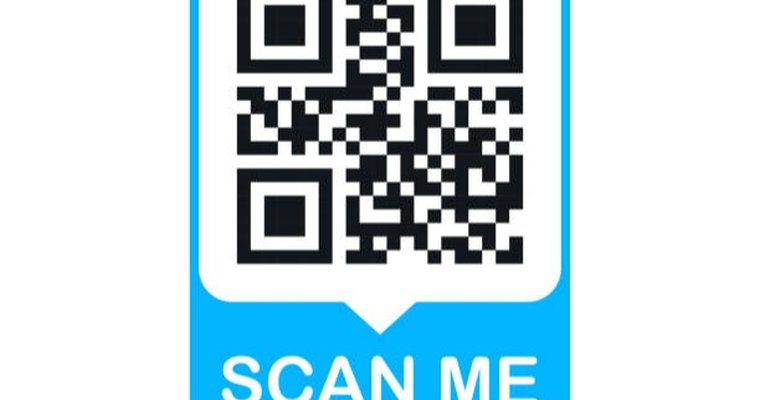Jean-Pierre Lacroix, founder and president of SLD, gives his take on the future of QR codes in this guest blog for Digital Signage Today.
By Jean-Pierre Lacroix
Denso Wave, a Japanese corporation, created the QR code more than three decades ago as a way to track auto parts for Toyota Motor Corporation. Thanks to the 78 percent increase in global smartphone penetration, QR codes have recently surged by 96 percent in both reach and number of interactions per object. Unfortunately, North America was late in the game, with QR code users in 2019 representing only 8 percent and significantly contrasting to the Asia Pacific at 15 percent and Latin America at 10 percent.
However, with the introduction of new mobile payment and service platforms, based on an eMarketer study identified in 2021, 75.8 million smartphone users in the United States scanned a QR code on their mobile devices, up by 15.3 percent compared to 2020. The usage of mobile QR code scanners is projected to experience constant growth, reaching approximately 99.5 million users in the US by 2025. In a survey of US shoppers conducted in June 2021, 45 percent of respondents reported using a QR code to access marketing or promotional offers. And marketers are responding. By 2022, mobile advertising will account for over 50 percent of ad spending and overtake desktop advertising. QR code usage will only ensure these investments are being clicked.
 |
Jean-Pierre Lacroix, provided |
Unfortunately, QR codes remain invisible to customers in North America. The rapid adoption of the QR code raises the question of why are marketers not featuring the unique square code on all consumer printed and digital touchpoints? A visit down a supermarket aisle or flipping through lifestyle magazines or in-store promotional posters will raise the question…where are the QR codes? We have outlined five key reasons why marketers need to stop sitting on the fence and adopt the QR code on all marketing material as the key to unlocking their marketing efforts:
1. Mobile, mobile and then mobile:Most consumers have computers in their pocket to do more than read emails or scan social media blogs. It is truly a portable marketing tool giving marketers access to consumers where they pay attention the most. For example, our groundbreaking Mobile Zombie banking study identified what many later studies noted; we would be willing to give up sex than our smartphones and view our phones a minimum of five times a day. In addition, QR codes allow for a seamless connection between external marketing messages found in print and online and a user’s smart device.
2. From linear to immersive experiences: The advent of AR will make our mobile devices a new channel for marketers to tell their unique stories through images, videos and augmented reality. The QR code is the easiest and quickest way to connect the device and the message in the blink of an eye. In addition, with the introduction of smart glasses and near future smart contact lenses, grabbing customers’ attention in a virtual world will become critical. Building a natural ritual by accepting QR code requests will ensure the link to immersive storytelling becomes intuitive and automatic.
3. Removing customer journey friction points: Our work in the food service and banking industry has noted friction points in the customer journey often leads to brand defections. In the food service industry, operators are learning the placement of QR codes to view the menu, order and make payments increasing the customer experience by eliminating the biggest service experience complaints. Likewise, Bank account QR codes can ease transferring, making payments, and downloading funds.
4. Shortening attention span: We receive thousands of marketing messages daily, becoming numb to the clutter. The challenge for marketers is getting through this mess and driving customer awareness and engagement in their marketing message. QR codes are strong call-to-action messages that help trigger an engagement request for customers. A September 2020 survey of US and UK consumers revealed that 42.55 percent of respondents felt most secure scanning a QR code at a restaurant, bar, or café. However, QR code use in marketing must provide something exciting and benefitting customers. Not surprising as QR code coupon redemptions with mobile devices will quadruple to 5.3 billion this year.
5. Growth of digital: The pandemic has accelerated the adoption of digital channels for how consumers shop. Although 2022 witnessed a slight decline due to customers rediscovering a post-pandemic craving for a physical experience, online will grow to represent 23% to 27% of all sales. Most retailers are rethinking their store experience to ensure they drive growth and provide a competitive advantage to online-only retailers. Many are creating immersive physical experiences integrating the latest digital signing and interactive technologies. Best Buy is an excellent example of moving from retailing to showrooming its products supported by state-of-the-art digital signing. QR codes are another extension of a retailer’s need to engage with customers in the store or drive them to physical locations with QR code-enabled offers.
Scan this
Marketers today are being challenged to demonstrate an ROI on their strategies, ushering in the need to measure the right metrics. By actively engaging with a marketer’s content through measurable QR codes, consumer engagement will remain one of the critical determining factors if a campaign has met its objectives. In addition, QR codes will ensure an effective shortcut in connecting the message to the customer.
Jean-Pierre Lacroix is the president and founder of Shikatani Lacroix Design, a marketing and digital design company based in Toronto, Canada.

